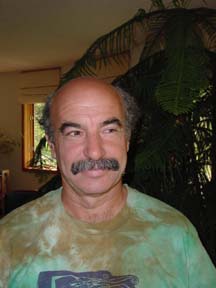What's happening with the Owls
I got into a conversation while working on the blog posts with another customer in the Cafe. First we talked about laptops, but then got onto Owls. They're starving. Quite a few have already been found dead with no signs of injury. The mouse/vole population in their normal range in Canada has crashed. Already weakened by hunger, they've flown south into Minnesota to what looks like good habitat, but the Minnesota mouse/vole population is also down, and has been declining further rapidly under the hunting pressure of so many invading predators. At one point on Thursdy, we had four GGO in sight at one time. They're thicker than Red-tail Hawks on fenceposts in Arkansas. The guy I was talking to asked reasonably, "Why don't they fly further south?" At this point they are too physically compromised to make a long flight; their fat reserves are gone, and they're metabolizing muscle mass to stay alive. Not being regular migrants, they don't have some special adaptations for fueling long flights, like the ability to add large amounts of fat. In any case, there's not enough food to allow for that, even if their physiology was appropriate.
Some of the owls are adapting by taking larger prey than they are accustomed to. There have been reports of them eating squirrels and rabbits. Laura Erickson is harvesting reports of such events, since she's most well known to non-birders from her radio program on NPR, For the Birds One interesting behavioral adaptation is that they cover their prey withtheir bodies to keep it warm enough to dismember. Otherwise it would freeze solid in minutes in the climates where they're operating.
I had pizza with Laura later that evening. She had lots of great stories and was a wonderful hostess. We had planned to go out for dinner, but there was 6 inches of new snow and more coming down. Her husband advised against unnecessary driving. The funny smell coming from my four wheel drive advised the same. Toward the end of dinner, as I was heading south into the storm, she showed me a Great Grey Owl that had been brought to her found dead. Beautiful critter, deep thick feathers like a parka, special adaptations on the wing edges for silent flight, long talons on small feet for capturing mice through snow. Sadly the face was shrunk from the loss of the insulating fat layer (just making the need for food more acute), and most alarming, the chest was missing most of it's muscle. Birds have their largest muscles attached to their sternum, referred to as flight muscles, think of a Thanksgiving turkey breast. On Laura's specimen, one could almost feel the ribs, like the turkey had had the meat carved away, only it was the owl eating itself in a last ditch effort to stay alive. And it was less than half it's healthy weight, I'm guessing, bizarre to lift such a sizable bird (standing it would be thigh high) and have it feel like an empty bag.
Some of the owls are adapting by taking larger prey than they are accustomed to. There have been reports of them eating squirrels and rabbits. Laura Erickson is harvesting reports of such events, since she's most well known to non-birders from her radio program on NPR, For the Birds One interesting behavioral adaptation is that they cover their prey withtheir bodies to keep it warm enough to dismember. Otherwise it would freeze solid in minutes in the climates where they're operating.
I had pizza with Laura later that evening. She had lots of great stories and was a wonderful hostess. We had planned to go out for dinner, but there was 6 inches of new snow and more coming down. Her husband advised against unnecessary driving. The funny smell coming from my four wheel drive advised the same. Toward the end of dinner, as I was heading south into the storm, she showed me a Great Grey Owl that had been brought to her found dead. Beautiful critter, deep thick feathers like a parka, special adaptations on the wing edges for silent flight, long talons on small feet for capturing mice through snow. Sadly the face was shrunk from the loss of the insulating fat layer (just making the need for food more acute), and most alarming, the chest was missing most of it's muscle. Birds have their largest muscles attached to their sternum, referred to as flight muscles, think of a Thanksgiving turkey breast. On Laura's specimen, one could almost feel the ribs, like the turkey had had the meat carved away, only it was the owl eating itself in a last ditch effort to stay alive. And it was less than half it's healthy weight, I'm guessing, bizarre to lift such a sizable bird (standing it would be thigh high) and have it feel like an empty bag.


0 Comments:
Post a Comment
<< Home